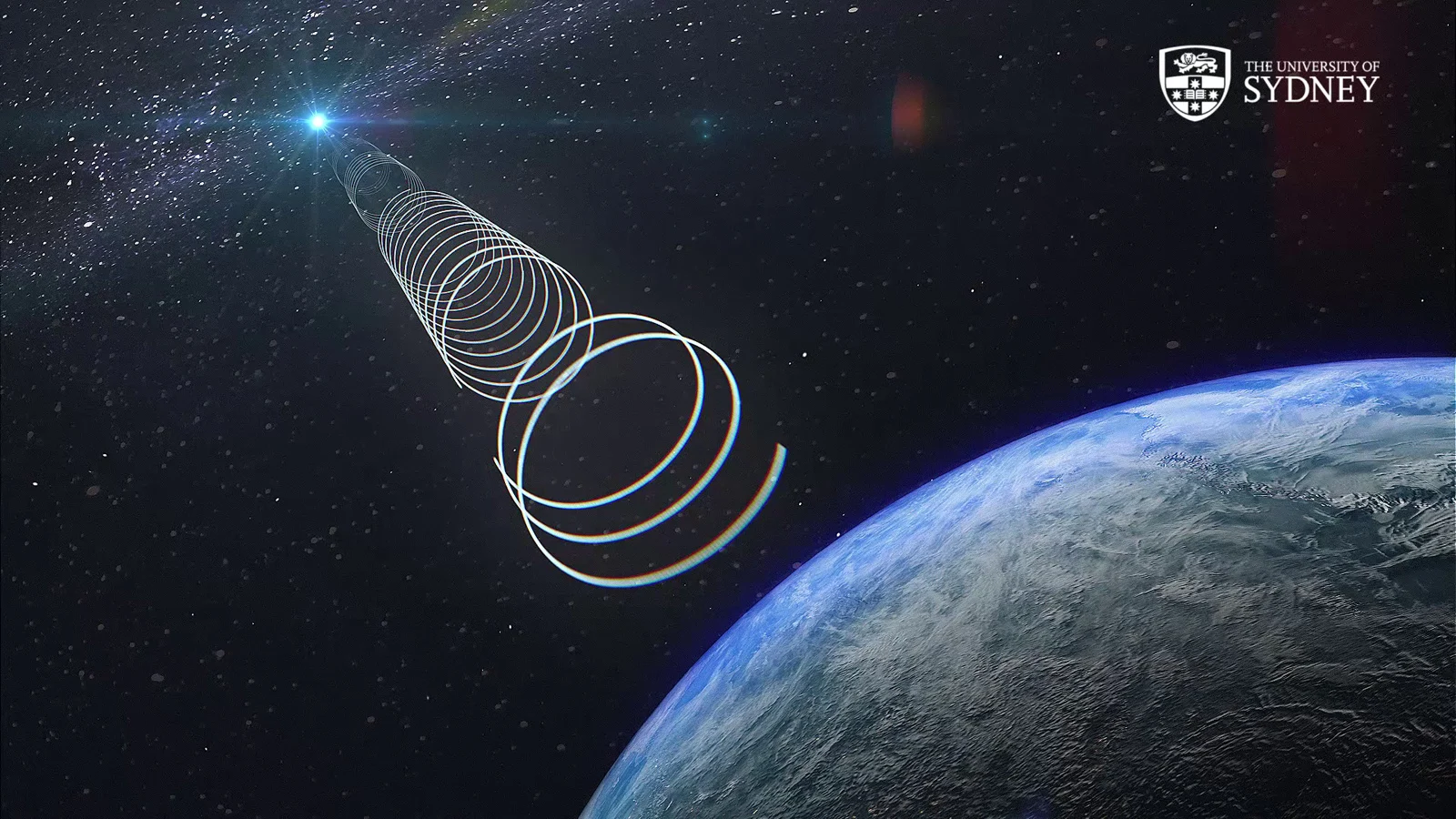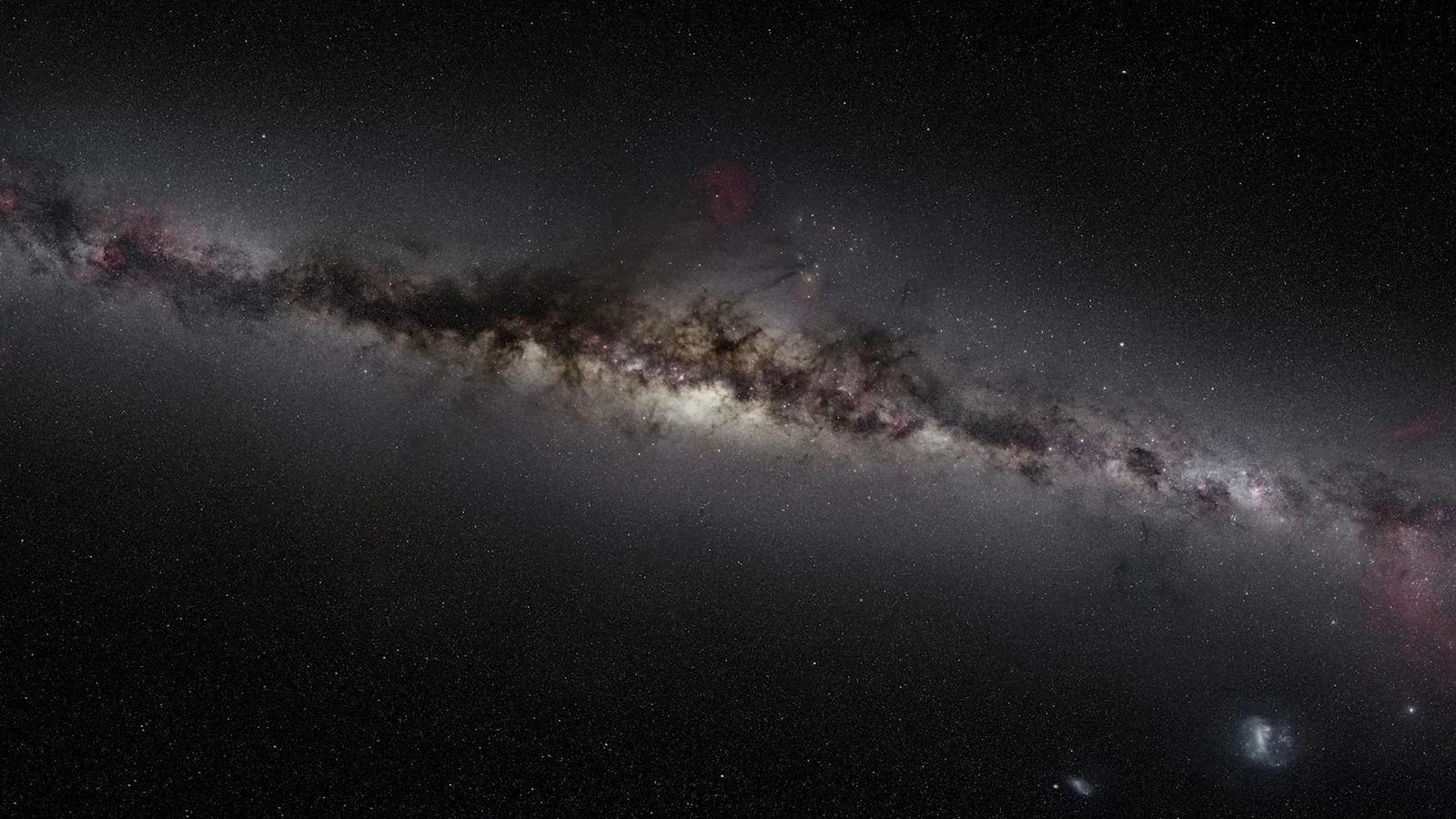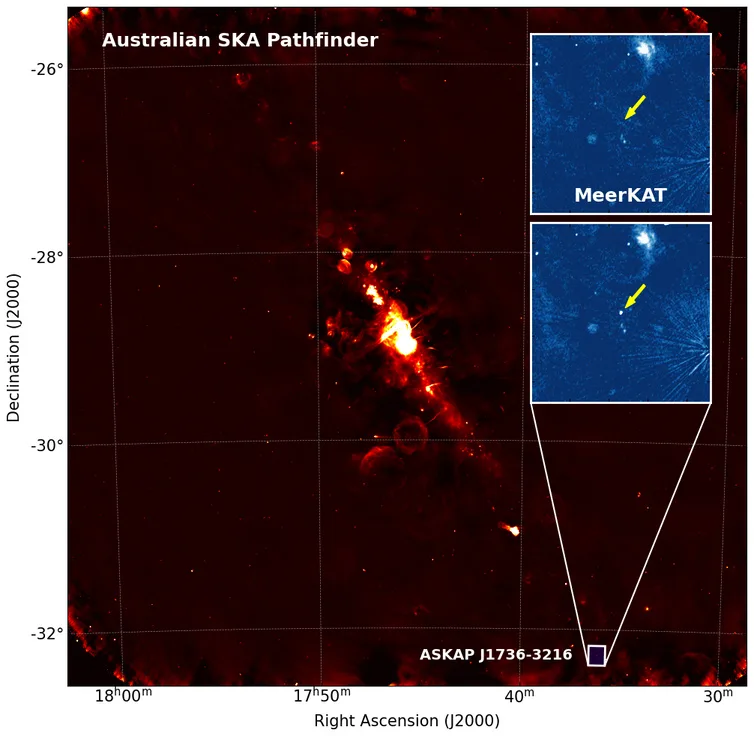
Bizarre radio waves point to something strange deep inside the Milky Way
These spiralling signals blinked on and off in a way never seen before, leaving astronomers with quite the mystery on their hands.
Some mysterious object deep within our galaxy is emitting a bizarre pattern of radio waves unlike anything seen before. This has led the astronomers who detected it to wonder if they have discovered something entirely new for us.
Astronomers have been scanning the sky with radio telescopes, looking for anything out there that is changing. Stars may appear to twinkle as we watch them from here on Earth, but most of them are remarkably steady and unchanging (it's Earth's atmosphere that makes them twinkle, btw). However, some things out there change in brightness over time. Astronomers call them "variables." Other things appear and disappear. These are known as "transients." Finding these objects and events can lead to a deeper understanding of how the universe works.

The core of our Milky Way galaxy. Credit: Risinger/Guisard/ESO/Hubble
The Variables and Slow Transients (VAST) survey has been scanning the sky using the Australian Square Kilometre Array Pathfinder (ASKAP) radio telescope array since early 2020. Shortly after the survey began, it picked up something unusual.
"Looking towards the centre of the Galaxy, we found ASKAP J173608.2-321635, named after its coordinates," Professor Tara Murphy, a co-author of the new study from the University of Sydney, said in a press release. "This object was unique in that it started out invisible, became bright, faded away, and then reappeared. This behaviour was extraordinary."
Between January and September of 2020, the intermittent signals from ASKAP J173608.2-321635 showed up a total of six times.

The source of these strange radio signals is pictured in this composite radio image from both ASKAP and the MeerKAT radio telescope in South Africa. Credit: Ziteng Wang, et al.
"The brightness of the object varies dramatically, by a factor of 100, and the signal switches on and off apparently at random. We've never seen anything like it," said Ziteng Wang, the Ph.D. student who led the study.
The intermittent nature of the radio waves emanating from this object makes it strange, to say the least. What's even more bizarre is how the radio waves 'spiral' through space.
"The strangest property of this new signal is that it is has a very high polarization. This means its light oscillates in only one direction, but that direction rotates with time," Wang said.

This artist's impression shows the intermittent radio signals from ASKAP J173608.2-321635 spiralling their way through space. Credit: Sebastian Zentilomo
"Polarized radio sources are extremely rare," Wang, Murphy and their co-author David Kaplan wrote in an article on The Conversation this week. "We might find fewer than ten circularly polarized sources out of thousands. Almost all of them are sources we understand well, such as pulsars (the rapidly rotating, highly magnetized remnants of exploded stars) or highly magnetized red dwarf stars."
So far, the nature of ASKAP J173608.2-321635 remains a mystery. Other radio telescopes did not pick up the tell-tale radio 'ticks' of a pulsar, so it's not the remnant of a dead star. Also, no object was detected at its location with visible light or infrared telescopes, so it's not a red dwarf star either.

The Australian Square Kilometre Array Pathfinder (ASKAP) is an array of 36 radio dishes located in the desert of Western Australia. Credit: CSIRO
There is another type of object that has similarities to ASKAP J173608.2-321635. Due to their proximity to the Milky Way's core, they are known as Galactic Center Radio Transients (GCRTs). Regardless, there are apparently enough differences that GCRTs don't provide an adequate explanation.
"And we don't really understand those sources, anyway," Professor Kaplan said, "so this adds to the mystery."
For now, they will simply continue to collect more observations of this source, and others, with the hopes of eventually solving the mystery.










